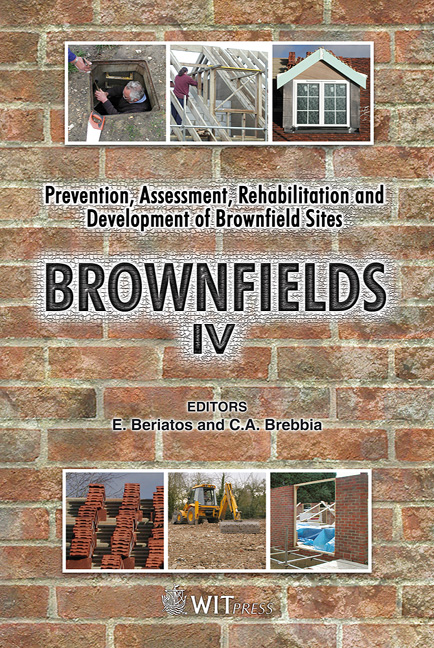Brownfields Revitalization: It’s All About Choices
Price
Free (open access)
Transaction
Volume
107
Pages
7
Page Range
25 - 31
Published
2008
Size
247 kb
Paper DOI
10.2495/BF080031
Copyright
WIT Press
Author(s)
S. O’Malley
Abstract
It can be said of New England and specifically the towns and cities that make up the Lower Naugatuck Valley (\“the Valley”) that these communities have almost made a complete circle back to the rivers and sites along those rivers that once created and supported great wealth and thriving communities. The towns and cities that have seen decline in employment, lack of developable land and a reduction in population have experienced regression, in part, because of the decline in manufacturing jobs, the difficulties faced with redeveloping contaminated properties, and the enormous task of restoring the rivers and parcels of land along those rivers to usable sites for economic growth and prosperity. When addressing brownfields issues, most municipalities face a steep learning curve. Part of the educational process is looking back on the history of these sites and understanding the role they played in forming thriving communities and the potential role they play today in economic development. How does a municipality, once again, realize potential and capitalize on the very sites that spurred economic growth in the 19th and early 20th centuries in the United States? To realize the benefits of revitalizing these areas, economic developers and municipal officials need to focus on the factors that contributed to past successes and appreciate how economies were driven by the factories and mills that dotted the Lower Naugatuck Valley in order to realize the benefits of revitalizing these areas. Taxpayers need to understand the critical role these industries played (and can play) in helping to increase the tax base. Allowing these sites to remain fallow will further contribute to the problems already facing these communities. Municipal officials need to feel comfortable in spending taxpayer dollars on sites that, at first glance, seem to offer little hope. Successful buy in from the elected officials leads to successful buy in from the community and, more often than not, will result in a very positive outcome. The charge for the professionals is to raise money, build partnerships, find skilled technicians and learn the basics of the environmental assessment process. We will explore methods of reviving brownfield sites through a summary of available direct and indirect funding options and creative solutions for municipalities. It is important to understand that the revitalization and restoration of these sites is cyclical and essential to the resurgence of a community’s economic growth and prosperity. Keywords: funding sources, redevelopment, creativity.
Keywords
funding sources, redevelopment, creativity.




